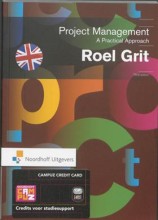Subject and Predicate
6 important questions on Subject and Predicate
What are the main components of a canonical clause?
- Subject: Typically realized by a noun phrase or a subordinate clause.
- Predicate: Realized by a verb phrase.
- Example: "One of his friends | called a doctor."
What semantic roles are typically associated with the Subject in canonical clauses?
- Actor/agent: In action-related clauses.
- Experiencer: In sensory experience clauses.
- Role depends on clause meaning and verb significance.
How can you identify the Subject in a clause?
- Position: Typically before the Predicate.
- Interrogative formation: Subject often inverted with auxiliary.
- Interrogative tags: Added for confirmation.
- Subject-verb agreement: Verb agrees with Subject's person-number.
- Higher grades + faster learning
- Never study anything twice
- 100% sure, 100% understanding
What are the steps to form interrogatives from declarative clauses?
- Invert the Subject with the first auxiliary.
- If no auxiliary, insert appropriate form of DO.
- The Subject follows the auxiliary.
What role do interrogative tags play in relation to the Subject?
- Composed of auxiliary verb and personal pronoun Subject.
- Relates back to the original Subject of the clause.
What is the default position of the Subject in a canonical clause?
- Before the Predicate.
- This position can change only under special circumstances.
- Example: "The boss is in her office."
The question on the page originate from the summary of the following study material:
- A unique study and practice tool
- Never study anything twice again
- Get the grades you hope for
- 100% sure, 100% understanding






























